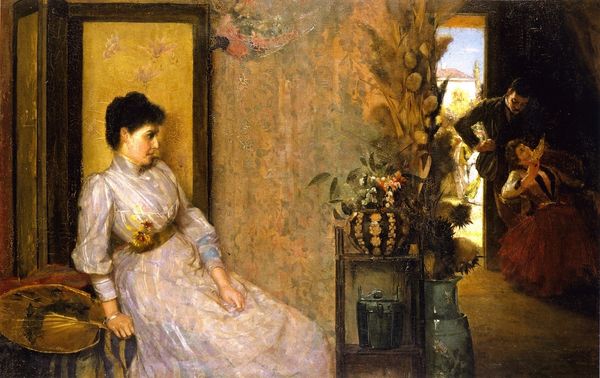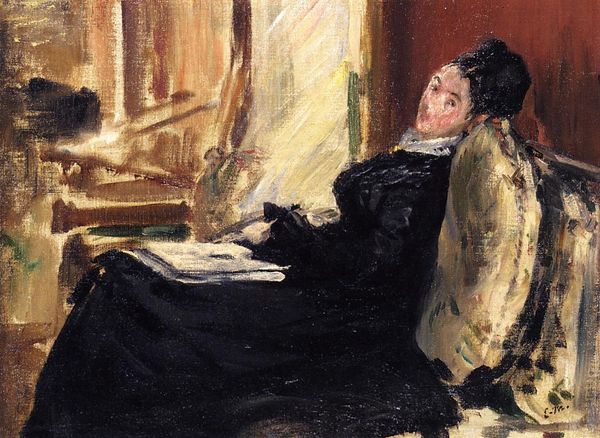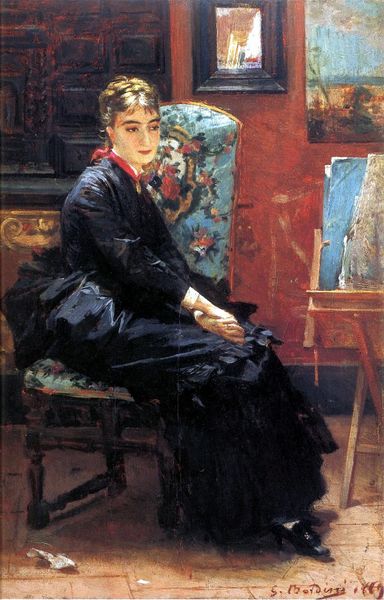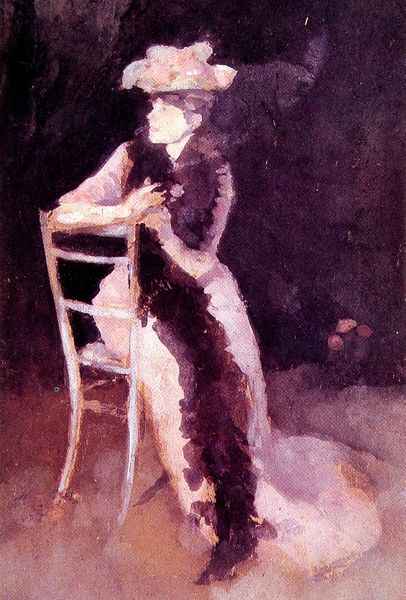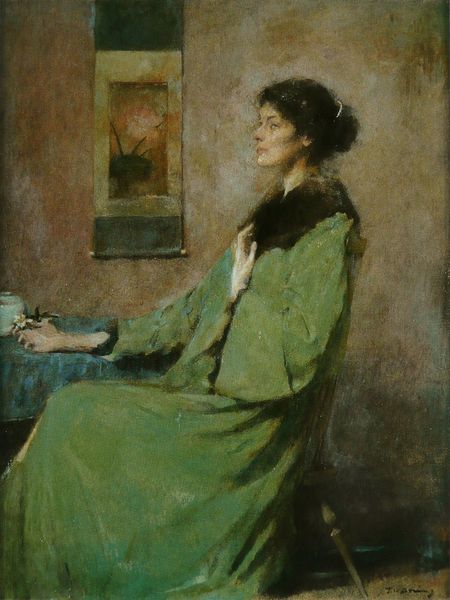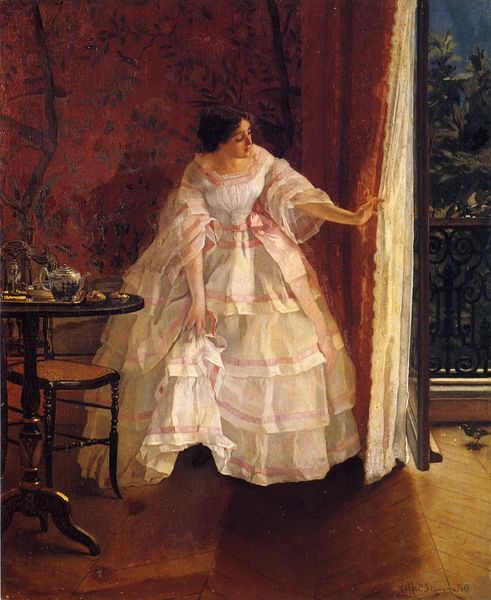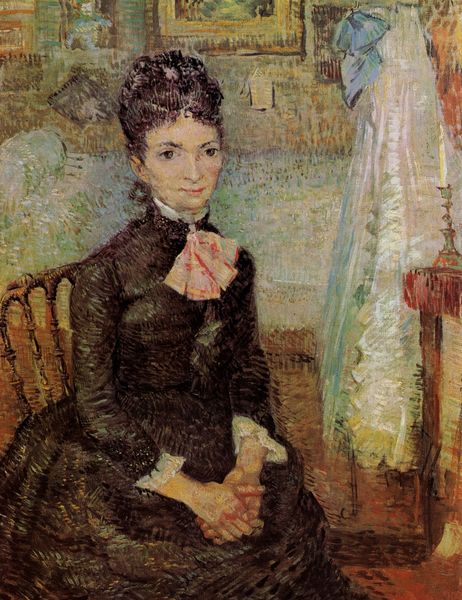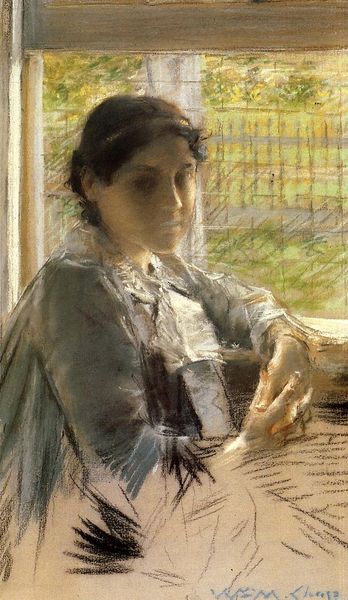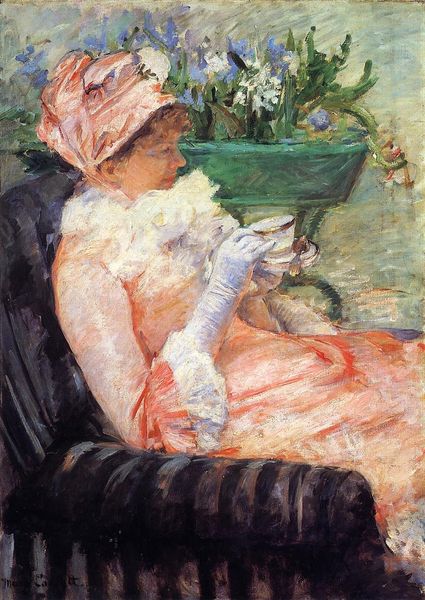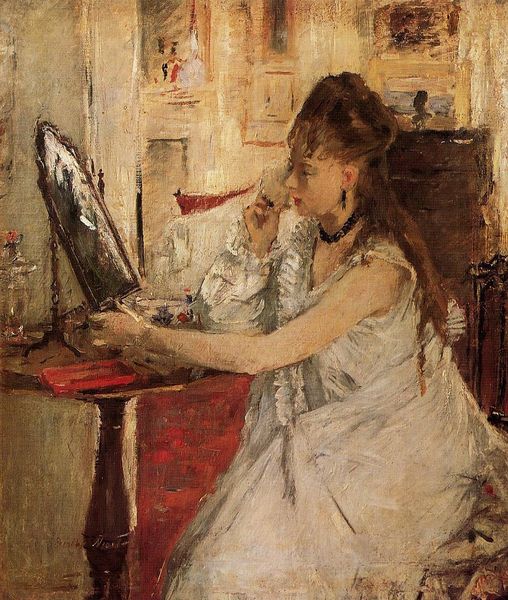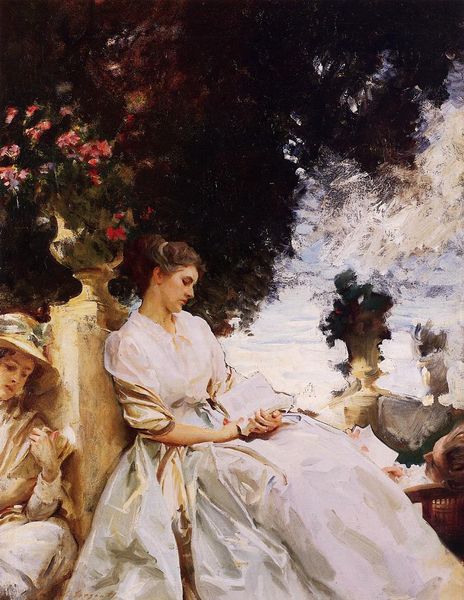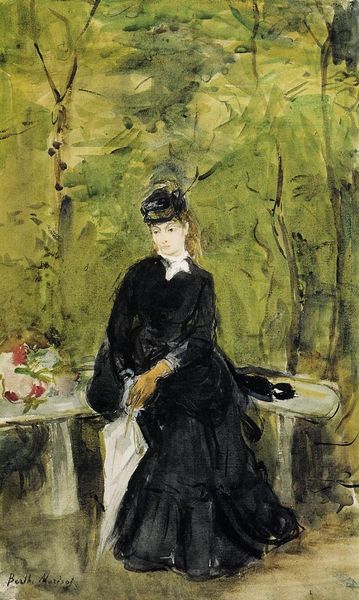
painting, oil-paint
#
portrait
#
painting
#
impressionism
#
impressionist painting style
#
oil-paint
#
oil painting
#
neo expressionist
#
genre-painting
Copyright: Public domain
Editor: Here we have Berthe Morisot's "Interior," painted in 1872 with oil paint. It feels very intimate. What draws my attention is how casually the scene seems rendered, yet there's such control over the light and shadow. What can you tell me about it? Curator: Looking at "Interior" through a materialist lens reveals Morisot's critical approach to representing bourgeois domesticity. Her loose brushwork, often considered ‘unfinished,’ was a deliberate challenge to the rigid academic painting styles prevalent at the time. We see the raw materiality of the paint itself, drawing attention to the labor involved in the process, right? Editor: Yes, the brushstrokes feel quite visible. Is she commenting on something specific by leaving the work looking ‘unfinished’? Curator: Exactly. Consider the materials available to women artists of the period and the constraints on their public and private lives. Morisot transforms a typical genre scene, a commonplace interior, into an active site of artistic production, consciously using the medium of oil paint to redefine her role, and women’s role, in that society. Editor: So, it's less about depicting a perfect scene, and more about revealing the process, the means of creating that scene, as a form of social commentary? Curator: Precisely. Think about the subtle class distinctions represented by the fabrics, the fashions, the domestic space itself and how she uses the application of the paint to highlight them. Morisot isn't merely depicting; she's deconstructing. Editor: I see. That gives the artwork so much more depth. It's about the materials and the making, showing how that impacts our understanding of gender and class at the time. Curator: It shows how an artist used available resources and transformed traditional skills, but ultimately challenged the boundaries separating painting from simply "craft".
Comments
No comments
Be the first to comment and join the conversation on the ultimate creative platform.
